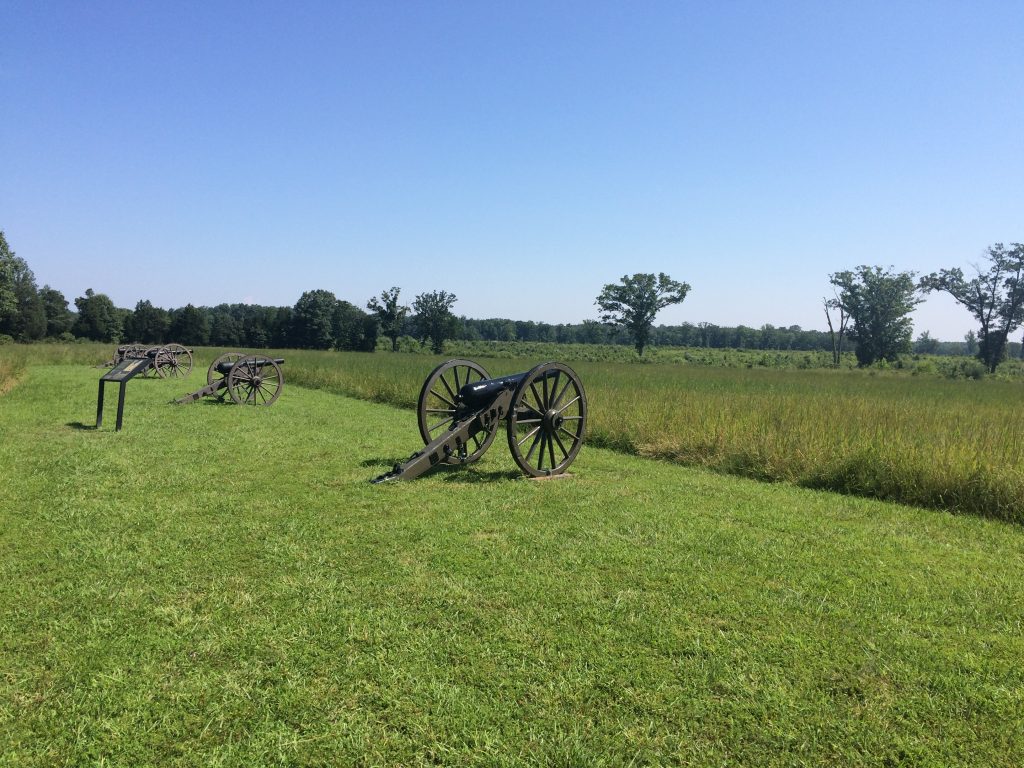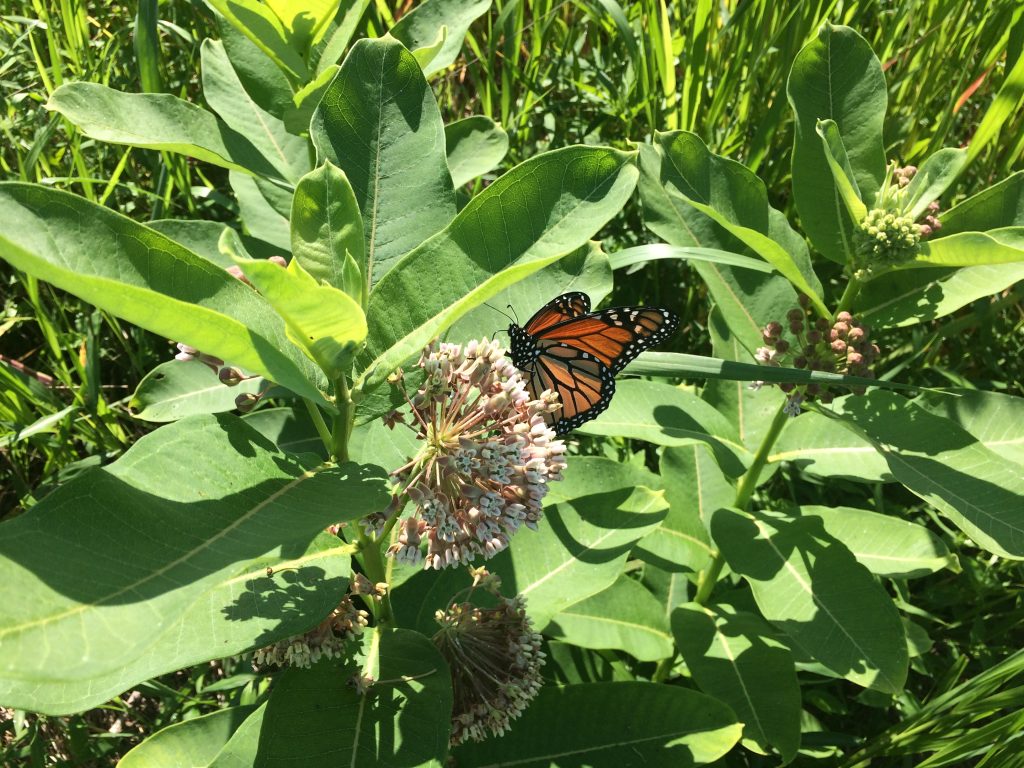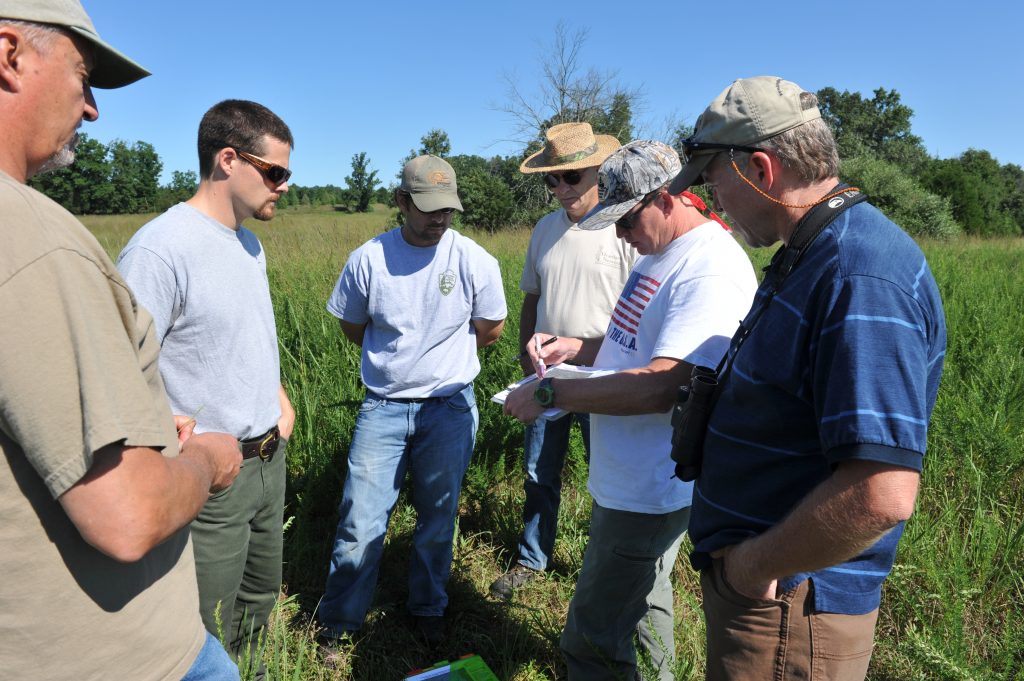Hot cannon metal under my hands, I peered down the barrel and across the open lands to where the Union troops under General John Pope poured from the wood line and into the hail of artillery from 36 Confederate cannons on Battery Heights not far from the Brawner House. It was on the afternoon of the 3rd day of the battle, on August 30th, 1862, that these cannon played the decisive role in the Second Battle of Manassas, (Bull Run). On this day, August 1, nearly 155 years later, I stood on the ground where over 3,000 men died in combat all those years before.

I had slipped away from our group of biologists, having seen a rail fence on the ridgeline, my one moment of digression during this quail habitat monitoring workshop. Once there and seeing the cannon I had to take a closer look. I don’t believe in ghosts, but I do believe in souls. Closing my eyes for a brief moment a chill went down my spine and my eyes misted. I believe wherever we travel a small part of us stays behind forever. For an instant I felt the same fear and exhilaration those men on that fateful day felt. What goes through a man’s mind when he charges headlong into such carnage? The rest as they say is history and what is arguably one of the most important events in the story of humankind ended 100 miles to the south in Appomattox less than 3 years afterwards (though we are still trying to heal some of those old wounds).
I doubt those men could have had even the slightest inkling of how much change would occur over those next 150 years. The constant sounds of commercial airliners approaching Dulles International Airport, or Reagan National Airport served as the backdrop for most of our day in the field. Traffic on the nearby highways was never ending. Yet Manassas National Battlefield Park (NBP) serves as a unique oasis for wildlife in the middle of a metropolis. With over 5,000 acres of habitat, wildlife thrives. And yes, even the bobwhite quail remains – largely due to the extraordinary efforts of the Manassas NBP staff.
Think about that for a second. In one of the most human dominated landscapes in America, with enough land and the right habitat management, bobwhite quail can find a way to win. If this does not give you hope for bobwhites, or convince you that habitat does work, there is not much more I can say to you, or is there?

And this was one of the primary reasons our group of about 25 biologists gathered at Manassas NBP earlier this week. We were there to practice conducting habitat monitoring as part of the National Bobwhite Conservation Initiative’s Coordinated Implementation Program (CIP). Developed by the science subcommittee of the National Bobwhite Technical Committee among others (our own Jay Howell played a key role), the CIP will prove to be the largest coordinated monitoring effort ever undertaken for bobwhites (and several songbirds, too.) Virginia was proudly one of the first seven pilot states. The number of states now involved has soared to 21 and at some point we hope all 25 NBTC states will come on board.
But why do all this?
No matter how hard biologists stress that while other factors may play a role in bobwhite decline habitat loss is still the driving factor, many people simply did not believe us. Further, though many states did have evidence of habitat’s effectiveness, each state did their own thing and trying to compare survey results was like comparing anvils and kitchen knives. Beyond being made of metal, they do not have much in common.
All states participating in the CIP will be using the same methods to monitor habitat and bird response. Further, they will use the CIP to layout and design their focal areas. The monitoring protocol is designed to work across the vast array of ecoregions where quail occur. Take a deep breath and then think about the power of this program. Potentially 25 or more focal areas across 25 states all replicating the same methods and analyzing their results to form a massive data set that will answer this question once and for all. But the CIP is more than a monitoring program; it is a catalyst for quail habitat work and partnerships.

Witness how the National Park Service (NPS) has embraced this program (along with others like the U.S. Forest Service). The first official NPS CIP Focal area was Pea Ridge National Military Park in Arkansas and they are smack in the middle of implementing their focal area. Their staff came to Virginia this week to help their peers at Manassas NBP. In addition to the Pea Ridge staff, our group this week included key national staff from NBCI, national level NPS staff, Manassas NBP key staff and field biologists, staff from Chickasaw National Recreation Area in Oklahoma, a West Virginia DNR quail program biologist, a Quail Forever coordinator from South Carolina who is leading their focal area, a biologist from Virginia Working Landscapes, a teacher (our instructor this week) from Northwest Arkansas Community College, and our own VDGIF staff.
Ours was the second of such training workshops, the first being in Kentucky last year and more are already scheduled. I won’t ramble on anymore today about the CIP, but I hope that for those of you who feel not enough is being done for quail, we are doing more for them now than at any time in history. You will be hearing more about the CIP and I believe it will lead to you hearing more quail in the future.
Having been an infantry soldier, I know what those Civil War soldiers were thinking about when they were baking with sweat streaked faces in the hot summer dust, or freezing to death in the dank winter mud, the only intangible thing holding them to that particular spot on earth being their own honor. They thought about simple things … a home-cooked meal shared slowly around a table with good conversation, a clean, dry and safe place to sleep, the rhythmic sounds of summer katydids on a moonlit night or the sound of a bird coming from the fence lines at least as peaceful as the call of the mourning dove. Softly at first, “bob-BOB-WHITE,” …“bob-BOB-WHITE,”…”it’s ALL RIGHT,”…it’s ALL RIGHT” – I’m still breathing in and out.






